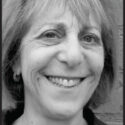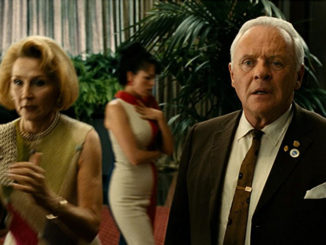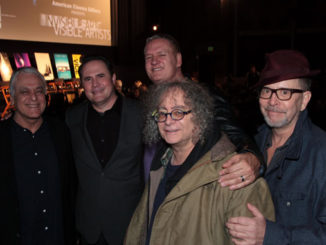
by Debra Kaufman
At the 2019 Oscars, the nominees in the Sound Mixing category have worked on a wide variety of movie genres, from the super-heroes of Black Panther to the Oscar-nominated Rami Malek’s turn at stadium rock with the band Queen in Bohemian Rhapsody to a stellar remake of the iconic A Star Is Born. The other two movies use sound very deliberately to create authenticity: First Man, which tells the story of Neil Armstrong’s journey to become the first man to walk on the moon, and Roma, in which director Alfonso Cuáron lovingly recreates the images and sounds of his 1970s childhood in Mexico City.
The re-recording teams creating these soundscapes are Steve Boeddeker and Brandon Proctor (with production mixer Peter Devlin, CAS) for Black Panther; Paul Massey and Tim Cavagin (with production mixer John Casali) for Bohemian Rhapsody; Jon Taylor, CAS, Frank A. Montaño and Ai-Ling Lee, CAS (with production mixer Mary H. Ellis, CAS), for First Man; Skip Lievsay, CAS, and Craig Henighan, MPSE (with production mixer José Antonio Garcia), for Roma; and Tom Ozanich, MPSE, Dean Zupanic and Jason Ruder (with production mixer Steven Morrow, CAS) for A Star Is Born.
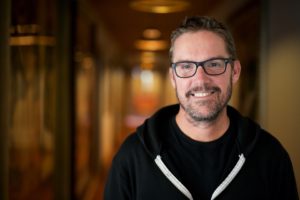
Directed by Ryan Coogler, Black Panther was pre-mixed at Skywalker Sound, with the final mix at Disney, by Boeddeker, who is also an Oscar nominee as the movie’s sound editor) and Proctor, who have known each other for more than 20 years and have worked sporadically together since All Is Lost (2013). Their work was also nominated for CAS Awards. “We have the same aesthetic and we collaborate well together,” says Proctor.
Both mixers say one of the movie’s biggest hurdles was keeping in mind how important the movie was to a lot of the audience. “Black Panther has a lot of power and meaning to young people of all ethnic backgrounds,” says Boeddeker. Brandon adds that they “took the subject matter seriously and respected it for what it was.”
The two say they were also both able to “play off the relationship” that Coogler had with the composer, Ludwig Göransson. “They worked closely together with the music, and it was a good roadmap for us to know where Ryan wanted action, emotions, the African influence,” says Boeddeker. Both mixers worked with the music, while Proctor handled dialogue and Boeddeker did sound effects. “Ryan wanted a combination of high-tech sounds and very African-influenced sounds,” says Boeddeker. “We needed the mix to be organic and sci-fi at the same time.” With regard to dialogue, Proctor notes that one of the challenges was the use of the African language Xhosa. “A dialogue coach worked to make sure everyone was speaking properly in that dialect,” he says.
Proctor’s most challenging scenes were the delicate ones, such as when the actors meet on the ancestral plain, “where the words had to take all the weight with a minimal amount of sound effects.” He notes that in quiet scenes, there was a massive amount of cleanup of intrusive sounds, including “the hum of lights and the noise of set fans.” Boeddeker points out the challenges of the waterfall scenes, where the water sounds competed with dialogue and music “To get it all to work was pretty complicated,” he says. “The trick was to make it be not so constant but specific.” Proctor and Boeddeker were invited to the premiere. “Our first time watching with an audience, it was even more powerful than I imagined,” relates Boeddeker. Proctor agrees. “Seeing in social media the impact of a super hero that young people could relate to was very powerful.”
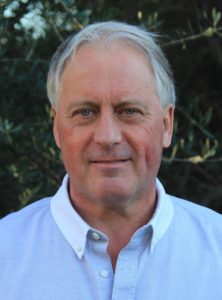
Bohemian Rhapsody, directed by Bryan Singer, follows the trajectory of stadium rock group Queen and its charismatic lead singer Freddie Mercury from unsigned band to legendary Live Aid concert. Massey, who mixed music (including the singing crowds) and dialogue, and Cavagin, who mixed effects, were both Queen fans and saw the band live when they were teenagers; Cavagin was even a member of the band’s fan club. The duo, who are also nominated for BAFTA and CAS Awards, have known each other for years, but this was their first film mixing together.
Massey mixed the dialogue pre-dubs in his Los Angeles home studio (another re-recording mixer, Niv Adiri, CAS, did some of the crowd pre-dubs), while Cavagin did his pre-mixes at Twickenham Studios in London; they came together for the final mix at Twickenham. “The biggest challenge for us were the large set pieces of live concert material,” says Massey. “We wanted the arc of the film to grow from the early formation of the band when they’re striving to find their sound to where they got their legs on their first tour of America and to the Live Aid concert. We needed to make sure the polish, width and breadth of the sound grew along with the film.”
The ultimate challenge, he says, was the Live Aid sequence. “We tried to recreate not only their iconic sound but the environment of the acoustic space and the thousands of fans,” says Massey. “We wanted to get the feel that when you were on stage with the band, you were with the band, and to highlight the
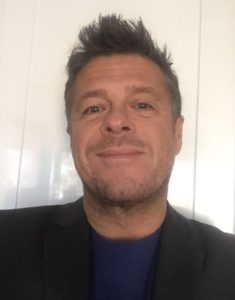
different musicians as the camera followed them around. All those intricacies still had to work within the context of the story.”
“Queen was on tour last year and when they played the O2 Arena in London, we were able to arrange time to play all the concert material for the film through their PA at full level with no audience present,” says Massey. “Then we recorded the sound and space of the stadium utilizing 22 microphones placed from ground level to the rafters. These recordings were used in the final mix to help recreate the large environments needed in the concert scenes.” Supervising sound editor John Warhurst also captured the sounds of 500 extras singing the songs three times. “We could stagger these recordings to give the illusion of the whole stadium singing along,” explains Massey. To get the “We Will Rock You” stomp, stomp, clap at the Queen concert, guitarist May asked the O2 Arena audience to do it. “We had a clean recording of 14,000 people doing it without any music behind that,” says Massey. “When combined with the stadium recordings and the crowd recordings without music, we were able to create the massive scale.”
Cavagin says part of his job was to create a sense of the crowd’s wave, “so it didn’t sound like a constant roar.” He created pockets of cheering crowds from various areas in the room, coming from the left or right. “I had to embed that to what Paul had done, without highlighting it too much,” he says. “We spent quite a bit of time making that sound as real as possible.” “It was a project of a lifetime for both
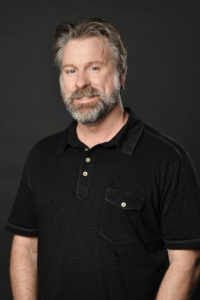
of us and a real honor to work with the whole Queen production team,” concludes Massey.
On First Man, directed by Damien Chazelle, Taylor, Montaño and Lee (who also has a nomination for sound editing and was the film’s sound designer) are also up for BAFTA, CAS and MPSE Awards. Montaño, who works on effects, and Taylor, who handles dialogue and music, have been partners at the Universal Studios Hitchcock Theatre for the last six years. Due to the movie’s large number of effects, Montaño and Lee split up this work.
Because they were recreating an actual event, the bar was high for authenticity. “Damien threw down the gauntlet that the Armstrong family had yet to hear the Saturn 5 lift-off done correctly,” says Montaño. “Because it produced so much power, it’s hard to recreate, but we did it with a combination of recording different rockets at various locations — from Vandenberg Air Force Base to Cape Canaveral and JPL’s acoustical test chamber in Pasadena.”
Taylor reports that to make sure the sound wasn’t too polished, they kept the raw tracks “a bit more than other films. We’re so used to cleaning things up, we had to decide what sounds were natural and which sounds pulled viewers out,” he says, tipping his hat to dialogue editor Susan Dawes and composer Justin Hurwitz. “The music was recorded analog, so it has a more organic feel to it,” he says. “The natural qualities lent itself to that realism/documentary-style we were going for.”
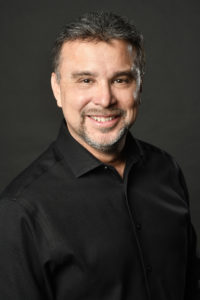
Montaño and sound effects recordist Alex Knickerbocker spent a year recording sounds that would add to the authenticity while he was working on other projects. To pay homage to the astronauts, they added numerous authentic sounds, including various switches, knobs and buttons. Montaño tracked down astronaut John Young’s actual Apollo 10 flight helmet, and recorded the sound we hear when actor Ryan Gosling snaps his helmet into place.
“We were able to record the internal air that the astronauts heard,” he adds. “When Neil is coming out of the lunar lander, down the ladder to walk on the surface of the moon for the first time, we’re hearing the authentic air sounds from the original space suit manufacturer.”
Lee, who did the re-recording mixing for effects, notes that the film’s final mix was in Dolby Atmos. “The biggest advantage was the full surround, which allowed us to put many bombastic rocket roars around the audience,” she says. “They could feel the weight and the size of the launches and explosions. We also did some radical panning mix moves during the multi-access trainer scenes, to portray the fast movement of spinning.” She adds that the goal was to portray space travel as “something unglamorous and show how vulnerable the astronauts were. Damien wanted to put the audience in the cockpit,” she explains. “He wanted the mission scenes to be chaotic and intense, and relied on sound to make them more visceral and real.
“We also built in some extremely loud moments and then we drop into shocking silence,” Lee continues. “We would start with authentic sounds we recorded or designed, and then morph into something more surreal or surprising — like an elephant roar or tiger growl — adding some distortion.” To create an analog sound, says Lee, she used Soundtoys’ Decapitator plug-in. One of the notable scenes is when Armstrong first steps on the moon. “We decided to stay completely soundless for a period of time,” she says.
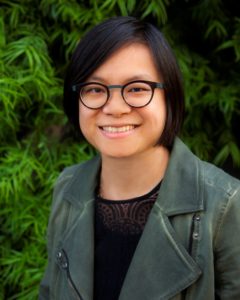
“Usually filmmakers will add a low soft tone, but we took the risk,” Lee reveals.” They created an air suction sound when Aldrin and Armstrong finally get the door open. “Then it cuts into pure silence,” she says. “Damien wanted to surprise the audience with sensory overload and then the silence feels deafening.” To slowly introduce sound, we hear Armstrong’s breathing, which then leads into dialogue. According to Montaño, the re-recording mixers’ efforts to create authenticity were a success. “The [Armstrong] family was happy with it,” he says.
Roma is an intensely personal film from Cuáron, who not only directed the movie but also took on the roles of writer, cinematographer, co-producer and editor (with Adam Gough). The movie portrays 1970s Mexico City in Cuáron’s childhood home and neighborhood, and sound played a key role in bringing this to life. Lievsay, who mixed dialogue and music (and was also supervising sound editor), and Henighan who mixed effects have worked together on and off since Valkyrie (2008).
The lack of a score, says Henighan, was one of the chief challenges. “It was up to us to fill out the soundtrack with the natural sounds of life in 1970s Mexico,” he says. “The music we did have was for transistor radios, car radios, stereos and TVs. All the atmospheres and sounds of the city were recorded and created by Sergio Diaz [supervising sound editor/sound designer] and his crew in Mexico.” Lievsay points out that the sounds are evocative of Cuáron’s memories. “Many of the things you hear — like the radio station call tags and the whistle that the sweet potato seller uses — were all from what Alfonso remembered,” he explains. “It was Sergio’s charge to find the sounds, and ours to get them in the movie to make it feel like you were there.”
The sounds, which included snippets of dialogue from a group of 100 actors, also had to track the characters in the scene. “Whenever you see people on the screen, they’re saying something meaningful to the story and events,” Lievsay says. “The idea is that everything is moving, just like it is in life. Alfonso is purely and simply saying, ‘Let it be like the real world.’ It took a lot of energy, material, time and patience to do it, but when it got it right; the artifice drops away and it seems normal.” Henighan agrees: “The whole goal was to make it as immersive as possible and also have the sound support the narrative of the story,” he says. “We spent a lot of time with Alfonso talking about what’s moving through the sound field.”
The most challenging sequence, say the mixers, starts in the furniture store where Cleo and the grandmother of the family, Teresa, are shopping for a crib, through a street riot that invades the store, to Cleo giving birth in the hospital. “We were really focused on making that section a continuous 360-degree soundtrack,” reveals Lievsay. Out of a long window on the right side of the furniture store, we hear the sounds of the riots. “When you’re in the street, you’re in the war zone, with guns firing, yelling and screaming,” offers Henighan. “Then we have to carry the riot to the furniture store.” When Cleo and Teresa escape by car to drive to the hospital, they’re stuck in a traffic jam. “We tried to pick the different car horns that were interesting enough to build into a crescendo,” he says.
Once in the hospital, we’re in a room with four women giving birth, with all their doctors and nurses. “Alfonso wanted it to play out at the same time,” Henighan continues. “So we had mini-mixes going on in all four quadrants of the theatre.” The cacophony turns to dead silence when Cleo is taken into her own hospital room. “The whole arc was incredible visually,” he says. “It was our job to make it work dramatically, and we did that by adding new sounds and always moving and panning the sounds though the sound field as you are experiencing all these things with the characters.” Lievsay adds: “You want the audience to feel the cacophony but focus on a line or sound that punches through; it’s like a magic trick.”
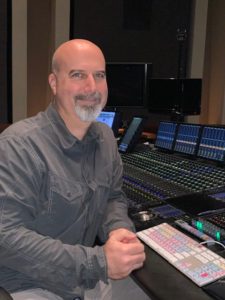
Directed by Bradley Cooper, with Cooper and Lady Gaga in the lead roles, A Star Is Born is a musical, a romance and a drama. Ozanich, who mixed dialogue and music — the latter with assistance from Ruder — and Zupancic, who mixed effects, are also nominated for BAFTA and CAS Awards. This is Ozanich and Zupancic’s first major movie together. “We really value each other’s opinion, although we have very similar sensibilities,” reports Ozanich. “I think the little differences we have complement each other and help us push each other a little further down the road.”
For A Star Is Born, says Ozanich, “We were trying to achieve a very realistic, natural-feeling movie where you always felt you were in that space.” He and Zupancic both point to supervising sound editor Alan Robert Murray and his team of doing a fantastic job in “keeping that theme of reality” by choosing and designing the right sounds. They also had high praise for ADR/dialogue supervisor Kira Roessler, MPSE, for her “outstanding work.” “Our challenges were to keep the dynamics alive when you went from a loud concert scene to a very quiet scene,” says Zupancic. He notes that the movie also has “a great arc,” as it goes from the hubbub of the concert scenes and “takes a sharp turn to quietness, focusing more on the two characters and their love story.”
Ozanich points to how they were able to achieve intimacy in the quiet scene in which Jack and Ally are sitting in the parking lot in front of the grocery store. “It’s in an open space in the middle of the night, and [production mixer] Steve [Morrow] did a great job capturing that,” he says. “There’s distant traffic and wind but an incredible sense of closeness to the two characters because of the delicate detail in the dialogue and ambiance. We were able to heighten the movie’s reality and highlight the great performances by making the sonic landscape subtle.”
The big music scenes were also a challenge. “One of the most unique things about A Star is Born is the use of live vocals,” says Ruder. “Bradley and Lady Gaga both wanted to be sure that all the vocals we recorded on set were indeed usable for post. Bradley was determined to keep authenticity on every level, so that the audience would feel like they were really there.” After a stage test at Warner Bros., he relates, they put into action a plan to do so; Morrow recorded over 60 tracks of production on set. “I had a very elaborate and clean sound roll to start editing and mixing music from very early on in post,” says Ruder.

Both Ruder and Zupancic point to the challenge — and the impact — of mix in the scenes leading to Ally’s performance of “Shallow,” which marks the beginning of her rise to stardom. “From the time she leaves the kitchen all the way through getting on stage and singing her song, all the elements from my end come together to get a physical, visceral, emotional feeling,” Zupancic says. “It’s not a concert movie – it’s a love story that happens to have concerts in it.”
That sequence, adds Ruder, “really felt like you were on the journey with Ally. The mix helped guide you there emotionally.”Ozanich and Zupancic stress how Cooper gave them the freedom to express themselves. “Mixing is very emotional, and Bradley gave us the freedom to be that,” relates Zupancic. “We were able to display that in our work, which was very gratifying.” Ozanich notes that Cooper allowed them to “present the mix to him how we hear it.” They would then sit down together and collectively shape that further,” he explains, adding, “That elevated it beyond individuals and became a synergistic end result.”


